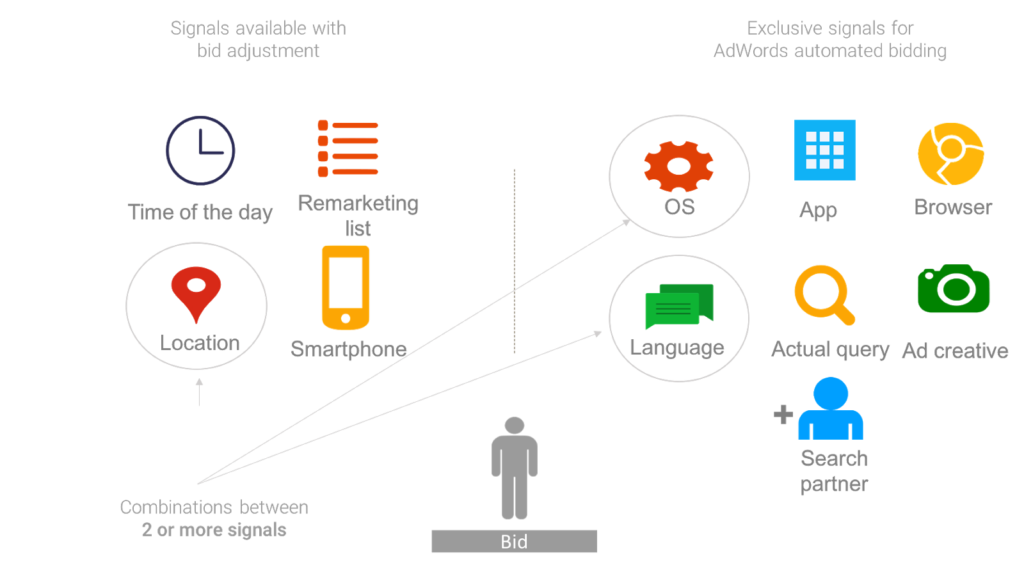Let’s face it: getting organic traffic to your website is hard. There’s tons of competition for keywords, social media is now a pay-to-play space, and voice search is throwing a wrench in everything SEO-related.
If you want to get more leads and sales, you’re going to have to do some pay-per-click (PPC) advertising. And with a whopping 63,000 searches done per second, Google is the place to do it. In fact:
- Google has 90.46% of the search engine market share worldwide.
- 15% of all searches have never been searched before on Google.
- Google has a market value of $739 billion.
- An average person conducts 3-4 searches every single day.
Google is constantly adding to and upgrading its massive suite of products, which makes it hard for the typical advertiser to keep up with what’s available to them. That’s why we’ve rounded up the six biggest Google Ads trends for 2020 to help you plan the right marketing campaigns for your business this year.
Book My Free Marketing Consultation
6 Google Ads Trends You Can’t Ignore in 2020
Trend #1: Google Ads Smart Bidding
In recent years, Google has invested heavily in artificial intelligence (AI), and Smart Bidding is one of the many results of that investment. Google’s definition is:
Smart Bidding is a subset of automated bid strategies that use machine learning to optimize for conversions or conversion value in each and every auction — a feature known as ‘auction-time bidding.’
Simply put, it takes the guesswork out of bidding for Google Ads. Google’s AI system uses machine learning to automatically optimize for conversions in each auction. You tell Google what your advertising goal is and Smart Bidding figures out how to get it done within your budget.
Smart Bidding works for a number of PPC goals, including:
Smart Bidding allows you to use many different signals for your bid optimization, some of which are unique to the system and unavailable with manual bidding. Here are just a few of the signals you can choose from:
- Location intent: Where a user intends to go versus their physical location. For example, if someone is researching travel.
- Weekday and time of day: Local businesses can target customers during certain times with relevant information or offers.
- Remarketing list: Ads can be optimized based on when users last interacted with products and what those interactions were.
- Ad characteristics: If you have multiple versions of an ad, Google can bid on the ones that are most likely to convert.
- Interface language: Bids can be adjusted for the language with which a user is searching.

Machine learning enables Smart Bidding to manage several signals at once in order to tailor bids to each user’s context. So if a user is more likely to click on your ad while they are on a bus on the way home from work, Google can raise your bids for mobile ads between 5 and 6 p.m. on weekdays.
Smart Bidding is a great option for businesses that are just getting started with Google Ads or for those who don’t have a ton of time to devote to managing a campaign. The main downside to using it is not having control over which third-party sites your ads display on — you have to choose all of them or none of them.
Dive Deeper:
Trend #2: Google Discovery Ads
Google rolled out Discover, its personalized mobile newsfeed, in late 2018. The goal of the feed is to surface relevant content to users even when they’re not searching:
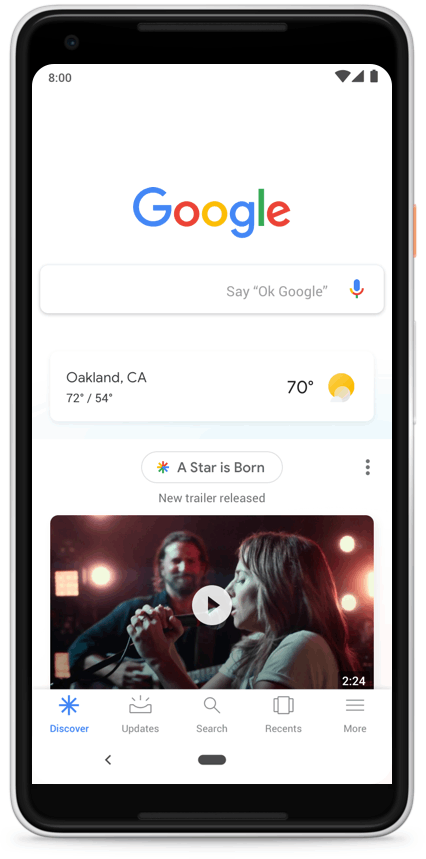
Discover’s content is arranged as cards under topics to explore and, depending on a user’s interests, includes different types like video, recipes, news articles and blog posts. Because the focus of the content is relevancy, it doesn’t always give you the newest content — typically quality evergreen content is featured.
Google Discover is available via the Google mobile app and by visiting Google.com on a mobile browser. Users can control what shows up in the feed, which leads to a more personalized experience.
Earlier this year, Google introduced Discovery Ads, which are native ads that show up in multiple Google feed environments.
Similar to Display Ads or YouTube ads, Discovery Ads must be visually engaging and mobile-friendly so that they feel native to the feeds they are displayed on. Google uses machine learning to optimize ad placement based on users’ search history, feed engagement and other factors to deliver them to the most interested potential customers:
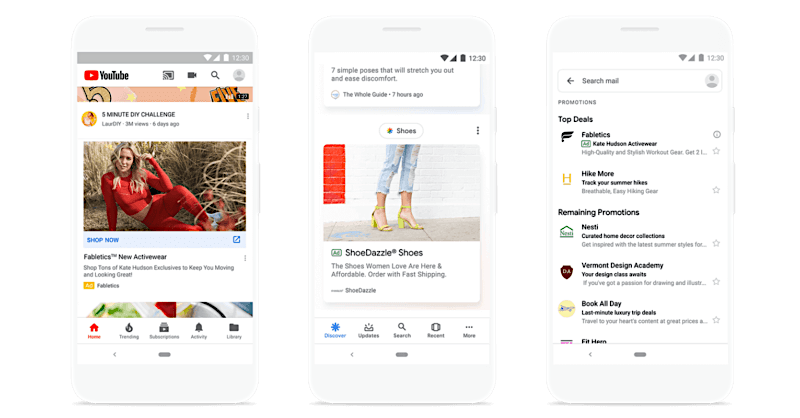
With Discovery Ads, you can showcase more than one image, similar to Facebook’s Carousel Ads:
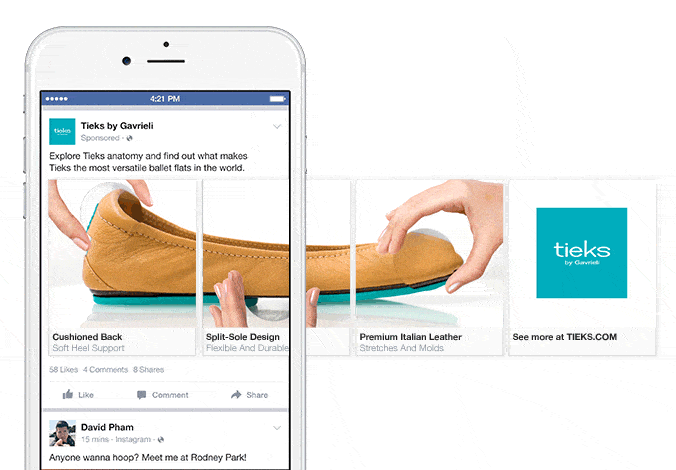
Google’s new Discovery Ads allow marketers to reach potential customers not just in the Discover feed, but also in the YouTube home feed and Gmail as well.
Learn More:
Trend #3: Google Gallery Ads
In the summer of 2019, Google launched the beta version of Gallery Ads. Similar to Facebook’s Carousel Ads, they feature images that mobile users can scroll through to get more visual information about a brand, product or service.
According to Google:
Gallery Ads work: Early reports show that ad groups including one or more Gallery Ad have up to 25% more interactions. Click To Tweet
Gallery Ads will appear at the top of mobile search results and feature 4-8 images. Each image will have its own text, along with a static headline and URL, and advertisers pay when a user clicks or swipes an image.
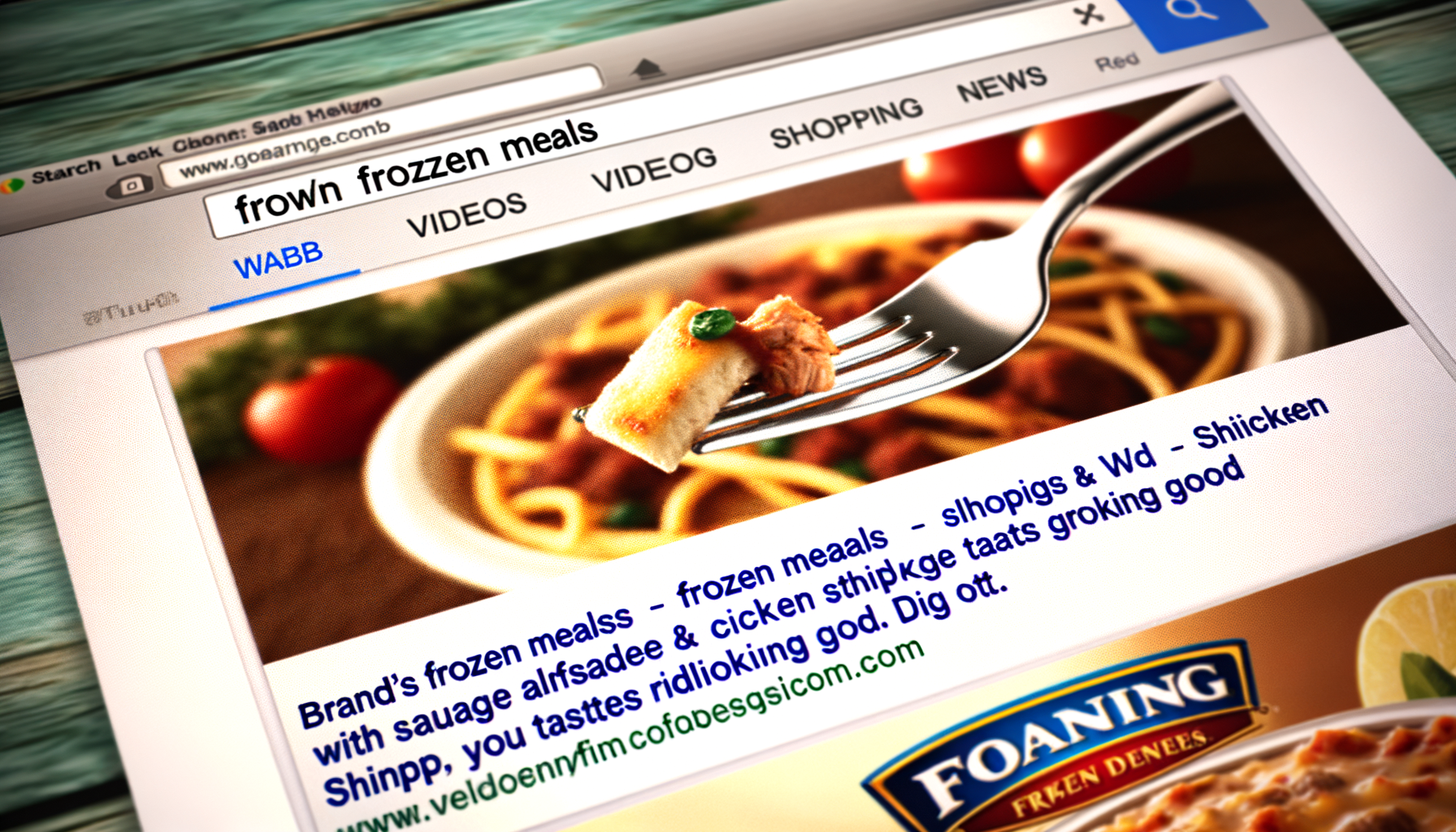
Gallery Ads may not have as many applications for B2B or service-oriented brands, but businesses with offerings that lend themselves well to rich visuals should definitely take advantage of them when they are widely released.
As Google increasingly moves away from the text-only search ads, advertisers will have more opportunities to present their products and services in a way that makes the most sense for their business — and their customers.
Book My Free Marketing Consultation
Trend #4: Expanded Audience Segments
We talked a bit about audience signals above, and growing them is something that Google is devoting a lot of time and resources to. Giving businesses more ways to target the right customer is a win-win proposition for Google, because it benefits both the business and the user (not to mention Google’s bottom line).
In October 2019, Google announced two expanded audience segments:
- Affinity Audiences: These audiences are built around interests and identified based on browsing behavior. Some examples of Affinity Audiences are beauty mavens, convenience store shoppers and cloud services power users. According to Google, Volkswagon used affinity audiences to achieve a 250% increase in conversion rates.
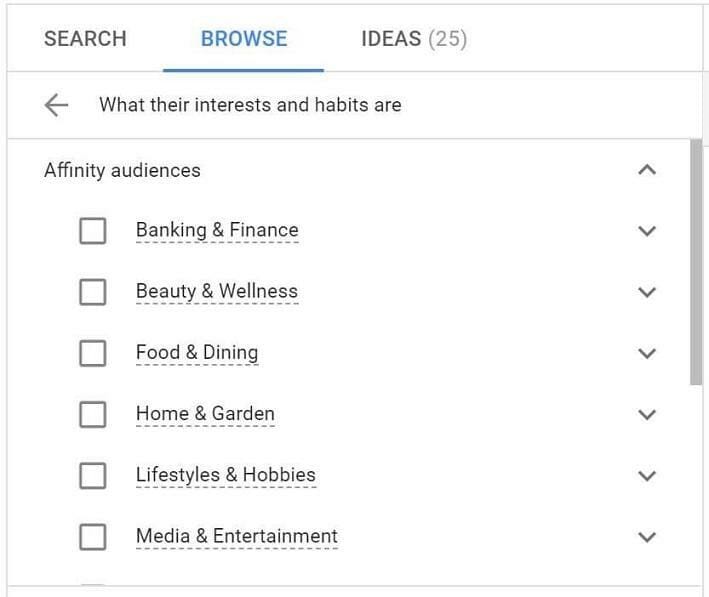
- In-market Audiences: These audiences are actively researching or comparing products and services. Google recently rolled out new seasonal event segments for these audiences so that advertisers could reach consumers on search and YouTube with timely offers.
According to Google, Toyota saw a 67% increase in conversion rate and a 34% reduction in cost per conversion when they used the Black Friday and Christmas segments to focus on shoppers actively looking for a car. With more than 700 in-market audiences identified, many companies will have the chance to interact with customers who are ready to make a purchase.
Find these new audiences in the Ads UI:

Neither of these signals are brand new, but they have been expanded to allow businesses to hone in on their ideal customers at the right time. You can layer these audiences on top of your other parameters when setting up a new campaign.
Dive Deeper:
Trend #5: Integrated Ad Campaigns with Google Lens
Google Lens is a visual search engine by Google, which recognizes objects and landmarks through a native app. It’s also integrated with Google Photos and, on some Android phones, with Google Assistant and the Google app. Here’s what you can do when you take a photo of the following items:
- Apparel and home goods: find similar products and where to buy them.
- Barcodes: use a barcode to find info about a product, like where to buy it.
- Business card: save the phone number or address to a contact.
- Book: get a summary and read reviews.
- Event flyer or billboard: add the event to your calendar.
- Landmark or building: see historical facts, hours of operation, and more.
- Painting in a museum: read about the artist and learn more.
- Plant or animal: learn about species and breeds.
Currently, you won’t see ads in Google Lens results, but Google is doing some really interesting things with integrated ad campaigns. Here’s a look at two high-profile cases:
Case Study #1: Google Lens and “Stranger Things”
To promote season three of Stranger Things, Netflix teamed up with Google Lens to provide a unique augmented reality (AR) experience.
For one day, people who bought a print edition of The New York Times were able to use Google Lens to take a picture of Netflix ads for Starcourt Mall (a fictional mall in the show) and bring them to life:
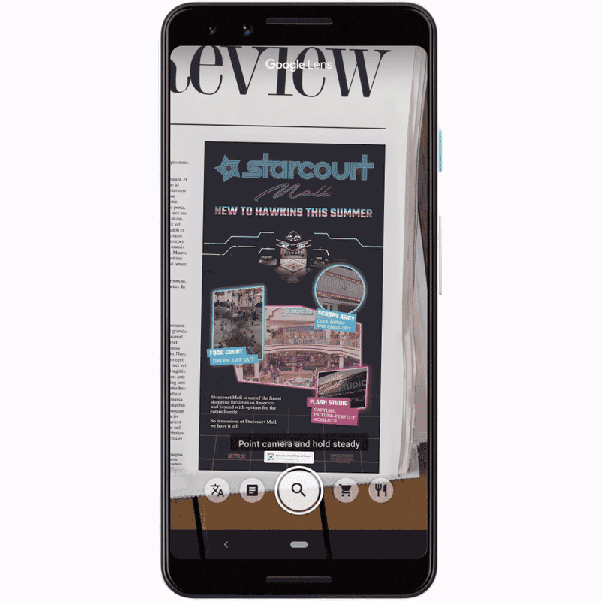
The AR experience included commercials for the new season as well as a teaser from the Upside Down. It was a really cool promotion and an interesting look at what’s possible when companies think beyond traditional advertising.
Case Study #2: Google Lens and “Pokémon Sword and Shield”
To promote the release of the game Pokémon Sword and Shield in Japan, the Pokémon Company teamed up with Google Lens for an augmented reality experience involving the box art for the game.
Using Google Lens, users could make the box art come to life:
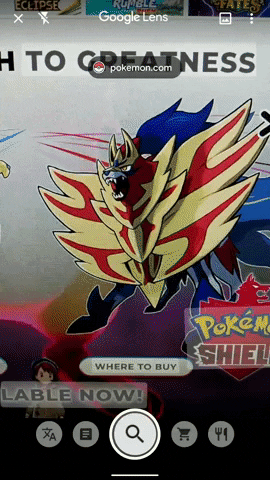
The promotion generated a lot of excitement for the game (not to mention going viral on social media).
Google will likely roll out more innovative ways for marketers to advertise on Google Lens, either within the app or in conjunction with the AR technology. It’s a fantastic option for companies who want to try something a little bit different.
Dive Deeper: Overlooked SEO: Optimizing Images and Video For Search
Trend #5: Google Ads and Voice Search
As more and more people buy smart speakers and search Google on mobile, text-based search is going to continue to decline. And that will mean big trouble for advertisers. Consider these stats:
- 55% of all American homes will own a smart speaker by 2022
- 72% of people who own voice-activated speakers say that their devices are used as part of their daily routines
- Voice shopping is set to jump to $40 billion in 2022, up from $2 billion today
- 2 out of 5 adults use voice search once daily
As of right now, voice searches that use screens — such as using Google voice search on a desktop or on a phone — will display ads…
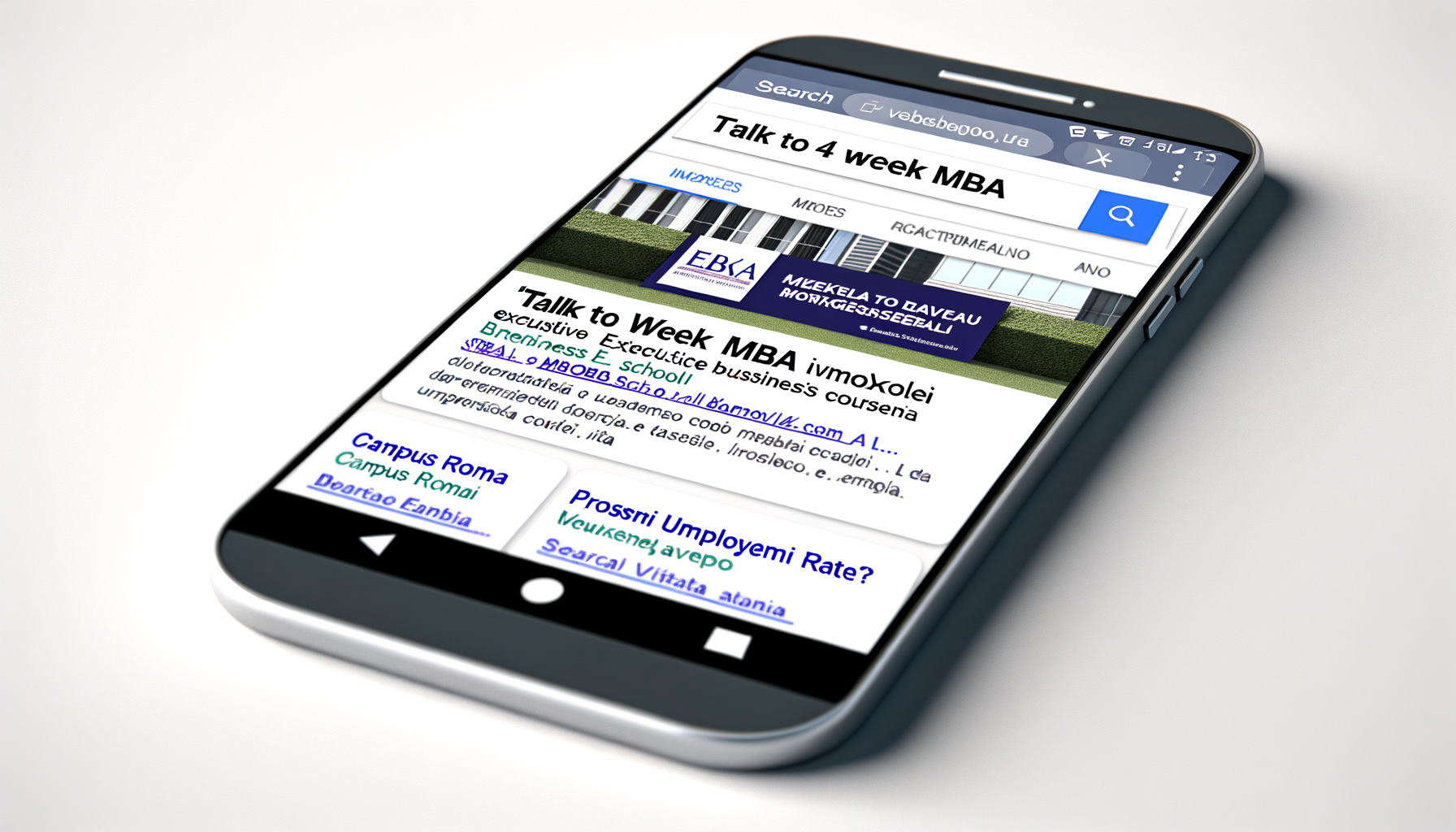
…but smart speakers like Google Home and Amazon Alexa devices don’t. That’s the bad news.
The good news? That will definitely change. In fact, Google is already testing ads on Google Home. As users move away from text-based search, the tech giant will surely find ways to monetize voice search.
Dive Deeper:
Get an edge over digital marketing with our epic trends guide: 42 Digital Marketing Trends You Can’t Ignore in 2020
Final Thoughts
The only constant at Google is that it’s always evolving to better meet the needs of customers. These are going to be the big trends to look for in 2020, but we’re sure some others are going to pop up throughout the year. In the meantime, get creative with all these new ad types!
